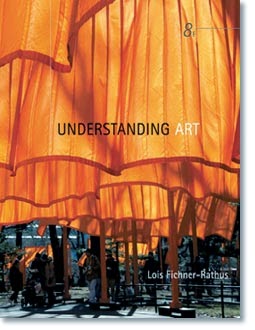
Art is anything that people add to their 'output' which is
not functionally necessary and is other than the default
properties of that output. The word "art" has been derived
from the Latin word 'ars', which, loosely translated,
means "arrangement" or "to arrange". This is the only
universal definition of art, that whatever it is was at some
point arranged in some way. There are many other
colloquial uses of the word, all with some relation to its
etymological roots. This word comes from the Greek
technic meaning art.

Art and science are usually treated diagonally opposite to
each other. While science means some phenomenon
resulting in truth, which is universal and objective in
nature. In other words, science findings can be repeated
under the same set of circumstances anywhere in the
world at any given point of time. Same cannot be said of
art. Art, on the other hand is purely subjective in nature.
Take for example, a painting - while one calls it a
masterpiece, same feelings cannot be expected from
other individual.

Art can roughly be divided into two, namely philosophical
art and aesthetic art. The philosophical type of art
involves human figures for some purposive actions. In
other words, philosophical art depicts human condition or
it is the conceptual frame of mind of the artist.

Aesthetic art, on the other hand, shows the perceived
frame of mind. Two examples will help illustrate these
two points of view - a Mona Lisa painting is philosophical
art, while a demon being killed by a super human is
aesthetic. These two categories are also called classical
and modern art respectively.

There are other ways of classifying art - major among
them being architecture, design, painting, music,
drawing, literature, performing art, etc. While these have
been (and still are) traditional forms of art performed by
human kind, newer forms of art have emerged with the
advent of technology. Some of the later era art forms are
games, animation, movie, computer art, shooting, etc.

Two of the most researched areas of interest to artists,
critiques and archeologists has been the art movement
(or art history) and art school.

An art movement is a typical style or tendency in art with
a specific common philosophy, followed by a group of
artists during a restricted period of time (ranging from a
few months to years or decades). Art school is any
educational institute offering education to its students on
various forms of art.

Birth of art gave rise to another group of individuals - art
critics. Art critics study and evaluate a piece of art. Its
main purpose is to rationalize the evaluation of art, and
ridding of any personal opinion affecting the work of art.
Art criticism today deploys systematic and formal
methods to evaluate the piece of art.

Museums are known to nurture and store work of arts
across the world. Early era museums were patronized by
the then kings and emperors. Today these are
maintained by governments or private trusts with or
without public money. Three major museum institutes are
British Museum, Museum of Modern Art, New York and
Galerie des Offices in France.

Understanding art in its totality is almost an impossible
task for a human being. There are over 3,600 terms in art
to be understood. And these are not definitive in nature.
Art is when you are free to redefine these.










